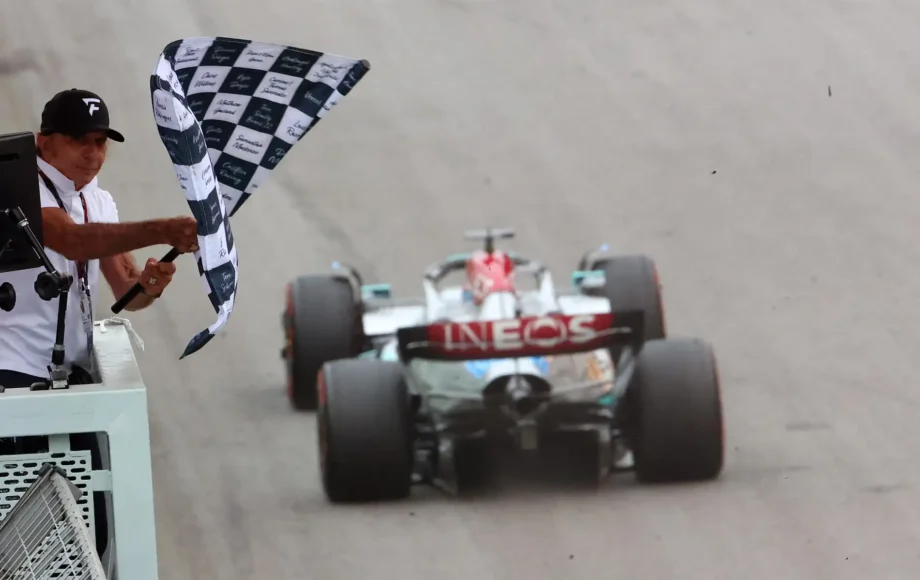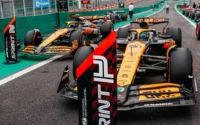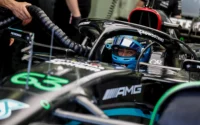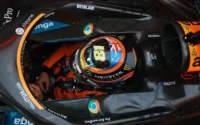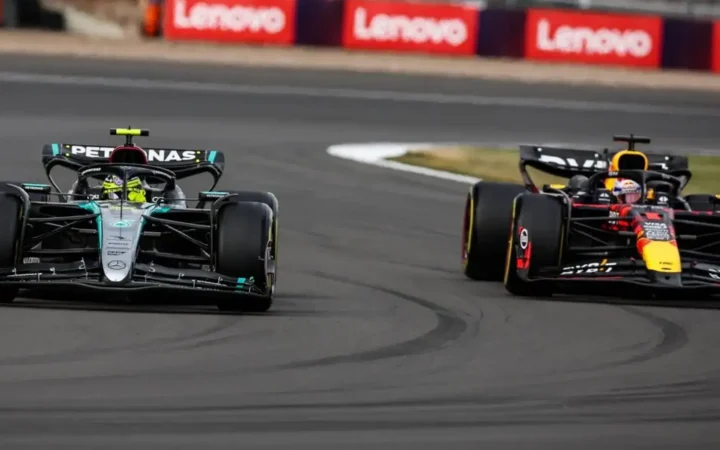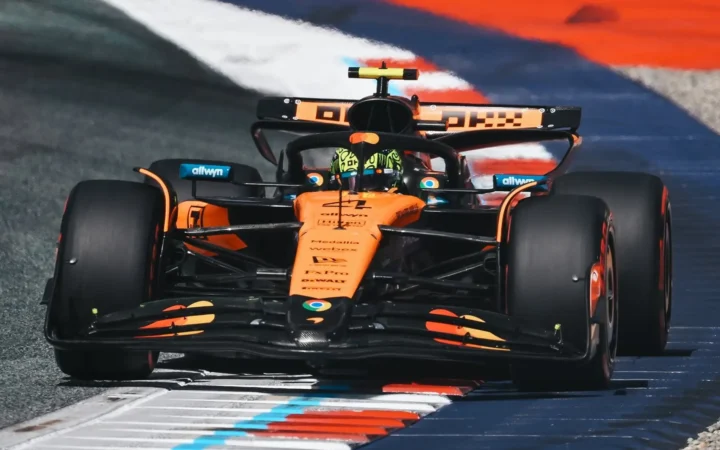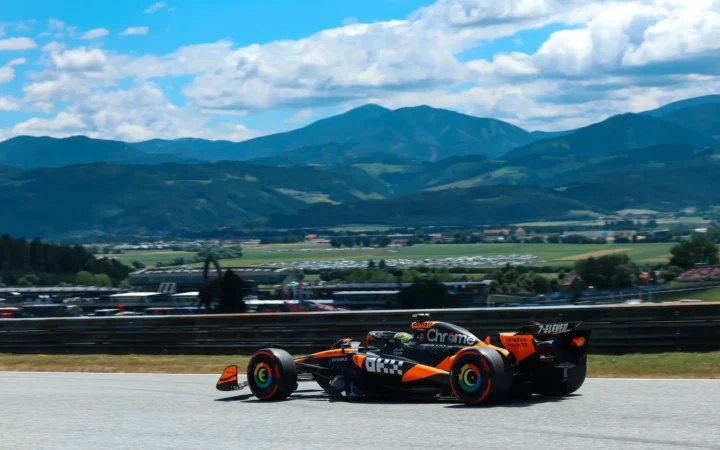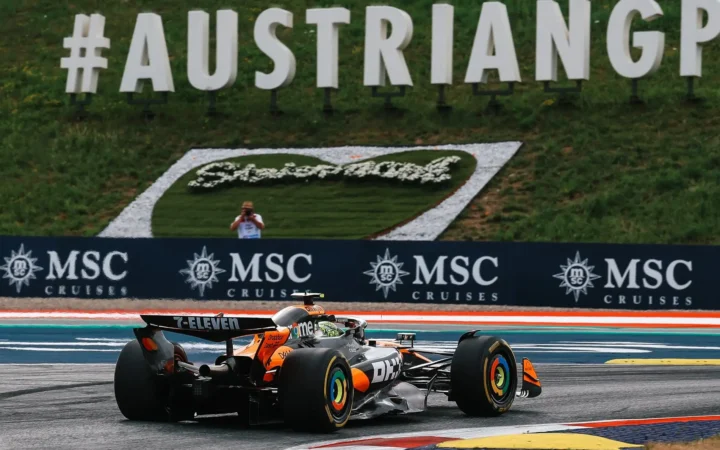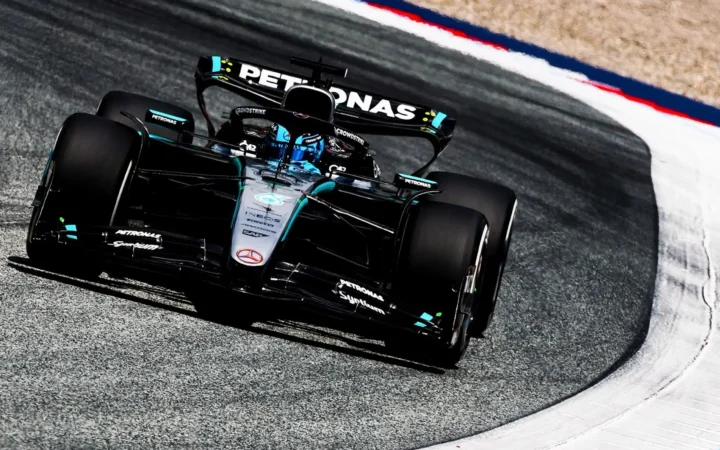Waved by marshals at the side of the track, these colourful pieces of cloth, each with its own meaning, play a vital role in ensuring the safety and fairness of Formula 1 races.
What to know
- Flags are a practical way for race officials to convey important messages to F1 drivers.
- The Formula 1 flag system has expanded in modern F1, each with a unique meaning.
- F1 now displays digital flag panels to enhance the communication of flag signals to drivers.
- The checkered flag signals the end of a Grand Prix race.
With many different colours and patterns, each with its own rules, teams and drivers must be aware of the flags waved during a race. In this F1 guide, we’ll help you understand what each one means, their history, and their impact on the track action.
The Historical Roots of Racing Flags
The use of flags as signals in racing has a long history dating back to the early days of motorsport. In the early 20th century, when racing was in its infancy and commonly held on public roads or open fields. With limited communication options, flags became a practical way for race officials to display important messages to drivers.
From green to red to black and chequered, these basic flags have been a part of motorsport since its inception. However, as Formula 1 evolved into a highly organised and regulated sport, a more comprehensive flag system was developed.
Green Flag
The green flag finds multiple uses in Formula One, notably at the race start. You might have seen a marshal with this flag positioned behind the starting grid, dashing across the track just before the race begins. When the green flag is waved, it signals the starting procedure; it indicates that the track is clear, and the sequence of five red lights to start the race can start the race. The green flag also makes an appearance at the start of both free practice sessions and qualifying rounds.
Beyond this use, Formula One relies on the green flag to mark the end of danger zones or to announce the start of a race after a safety car, physical or virtual. The appearance of the green flag once again shows that the track is clear and ready for racing.
Yellow Flag
The yellow flag alerts drivers of potential hazards. When race officials wave the yellow flag, drivers must reduce their speed and prepare for possible evasive manoeuvres. Drivers are also not allowed to overtake in sections of the track where yellow flags are being waved. Depending on the severity of the situation, either one or two yellow flags may be waved.
A single yellow flag is more commonly used when there’s debris on or near the track. In contrast, the double yellow flag is shown during more severe incidents, particularly when a large accident occurs on a track that is partially or entirely obstructed. In these instances, track marshals might also be active on the track, clearing debris and cars or repairing barriers.
When the double yellow flag is shown, drivers must reduce their speed enough to come to a complete stop if necessary. The yellow flag is maintained until conditions have improved and it is deemed safe to race again.
Red Flag
Red flags halt a practice session, qualifying round, or race event. Anything from a major incident to unfavourable weather conditions can bring out the red flag and will be shown at every marshal point around the circuit simultaneously.
During practice and F1 qualifying sessions, all drivers must reduce their speed and return their cars to their respective pit garages slowly.
More on F1 Qualifying
In race conditions, a similar protocol applies. All drivers must reduce their speed, make their way to the pit lane, arrange themselves in an orderly queue from the pit exit back, and await further instructions from race control.
Blue Flag
In Formula One, the Blue Flag notifies a lapped driver that a faster car is approaching from behind.
If a driver is shown the blue flag, they must yield the racing line to the faster car approaching from behind and allow it to pass without obstruction. Failure to yield can result in penalties.
The blue flag is also a safety measure, helping to reduce the likelihood of collisions or incidents as faster cars try to pass slower ones.
It’s worth noting that using the blue flag requires discretion from race officials. They typically wave the blue flag when a lapped driver is about to be overtaken, but they may not do it immediately, such as when a driver is involved in their own battle for position. In these cases, the blue flag will be displayed when it’s deemed safe and appropriate for the faster car to make the pass.
Checkered Flag
The checkered flag is an iconic symbol in Formula One and motorsport in general. The checkered flag signals the end of a Grand Prix race and determines the winner. When the race leader crosses the finish line at the end of the prescribed number of laps (or when the race duration reaches its limit), the checkered flag is waved by a race marshal at the start/finish line. After crossing the finish line, drivers usually complete a cooldown lap to return to the pit lane or parc fermé area, where they park their cars for post-race inspections and interviews.
The remaining positions of all drivers at the checkered flag determine the race’s final results, which are used to allocate championship points and podium finishers.
White Flag
The white flag with no other markings or symbols is used to indicate the presence of a slow-moving vehicle on the track. This could be another F1 car, or it could be for a medical or safety car that is not part of the competitive field. When drivers see the white flag, it serves as a warning to exercise caution and be prepared for a slower vehicle on the track.
The white flag is also commonly seen at the end of F1 practice sessions when drivers carry out practice starts on the grid.
Yellow Flag With Red Stripes
The flag featuring alternating yellow and red stripes is a warning sign for a potentially slippery track. Its purpose is to communicate to the drivers the presence of hazardous conditions, such as oil spills, rainwater, or a substantial gravel build-up on the racing surface.
Interestingly, the yellow and red striped flag is not waved by marshals; instead, it is held aloft. This helps to minimise any potential confusion during racing conditions.
Black Flag
The black flag has a significant meaning for drivers and is used by race officials to communicate with drivers about their instant disqualification from the race.
This disqualification can result from various infractions, including rule violations, unsafe driving, or violating race regulations. When the black flag is displayed to a driver, it is an immediate message to exit the race track and return to the pit area. The disqualification is typically non-negotiable and represents a significant penalty.
Race officials may also employ the black flag to address situations where a car or driver poses a significant safety hazard to others on the track. For example, a rear wing hanging off. In these cases, the driver must return to the pits immediately.
Black Flag With Orange Circle
Sometimes, the black flag may be displayed alongside an orange circle (the “meatball flag”). This combination indicates that the driver’s car has a mechanical issue or damage that poses a safety risk. The driver must enter the pit lane for inspection and potential repairs.
Drivers can return to the track once the mechanical issue has been repaired or resolved, so long as the chief scrutineer is satisfied the car is safe to race again. The driver may then rejoin the race. Otherwise, the driver and car must retire from the race.
Black And White Flag
The black and white flag, known as the “Driving Standards Flag” or the “Warning Flag,” is a warning for unsportsmanlike behaviour. Unlike the black flag, which indicates disqualification or serious issues, the black and white flag is a less severe warning. This may include aggressive driving, improper blocking, or any inconsistent behaviour with fair and safe racing.
Race officials may also use the black and white flag to indicate that a driver has violated specific racing regulations or etiquette. It’s a way of notifying the driver that they are under scrutiny and that their actions have been observed and deemed problematic.
Receiving the black and white flag is a warning to the driver that they need to modify their driving immediately. Failure to do so may result in penalties, such as time penalties, grid penalties, or fines, depending on the nature and severity of the continued infractions.
Digital Flag Panels
Digital flag panels, also known as “marshalling panels” or “electronic flag systems,” are technological advancements introduced in Formula One to enhance the communication of flag signals to drivers and spectators. These panels serve several key purposes in the sport:
- Real-Time Information: Digital flag panels provide drivers with real-time flag information. Instead of relying solely on physical flags displayed by trackside marshals, drivers can also receive visual signals through these digital panels.
- Improved Visibility: Digital flag panels often have high-visibility LED displays that drivers can see clearly, even in challenging weather conditions or when racing at high speeds. This enhances the visibility and effectiveness of flag signals, reducing the likelihood of misunderstandings or missed signals.
- Consistency: Using digital flag panels helps ensure the consistency and accuracy of flag signals across different sections of a circuit. It can be challenging for all marshals to display flags simultaneously on longer tracks, but digital panels can synchronise flag signals to provide consistent information to all drivers.
- Additional Information: These panels can display traditional flags and other information, such as the driver’s car number or specific messages. For example, they can display a car’s number alongside a black and white flag to warn drivers about their driving conduct.
- Spectator Engagement: Digital flag panels benefit drivers and F1 teams and enhance spectators’ viewing experience. These panels often display flag signals, driver information, and race-related messages on giant screens around the circuit or television broadcasts, helping fans stay informed about race developments.
SC/VSC
Although they don’t fall into the traditional category of flags, the inclusion of the SC (Safety Car) and VSC (Virtual Safety Car) signals should be highlighted. These signals come into play when a race requires a neutralised state, often prompted by an incident on the track.
The SC signal is a fixture on the circuit when the safety car is actively deployed. In contrast, the VSC signals the start of a virtual safety car phase. These signals are indicators of the race’s current status. They are strategically positioned along the track within the digital flag panels to ensure visibility and awareness among drivers and teams.
Seen in:

